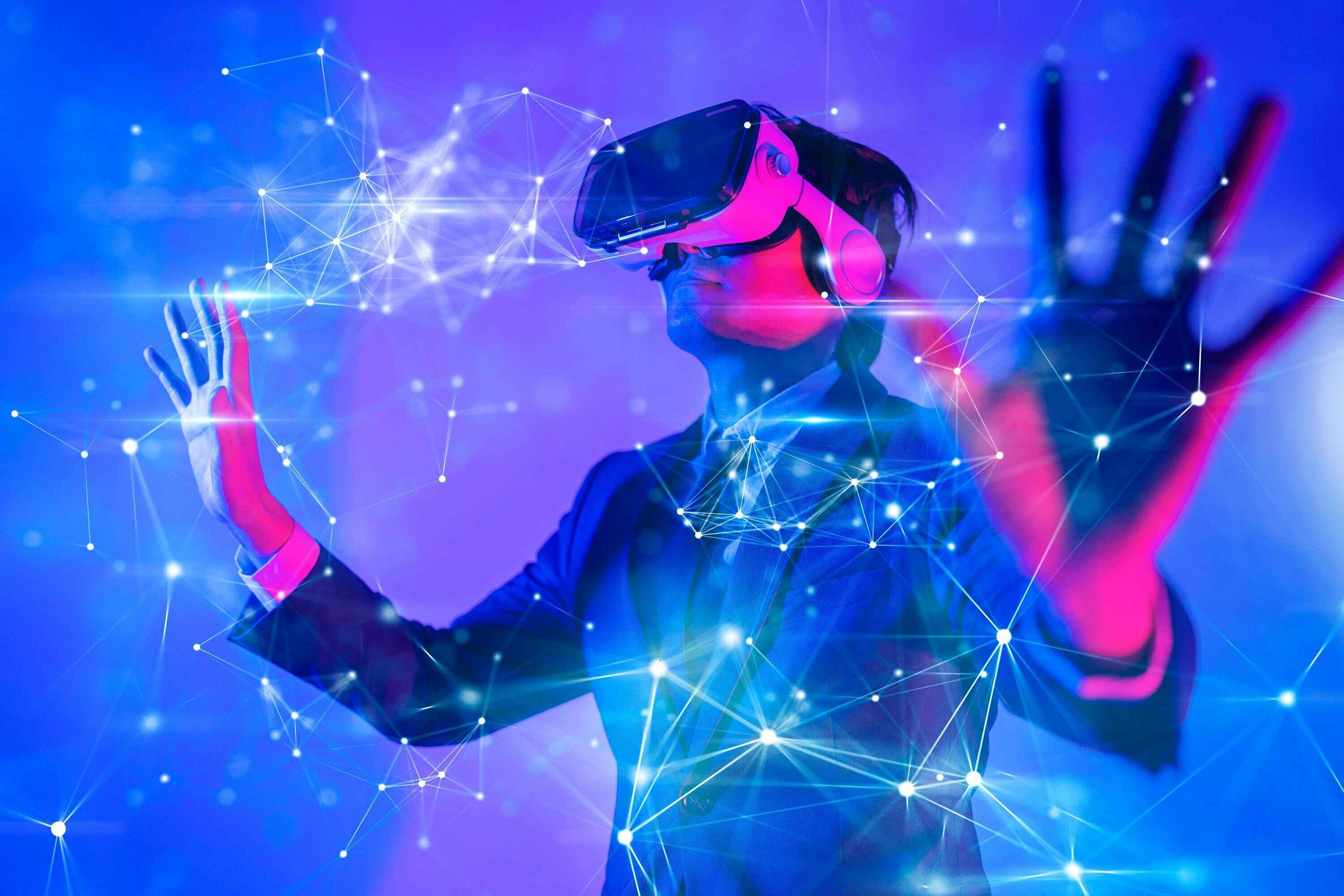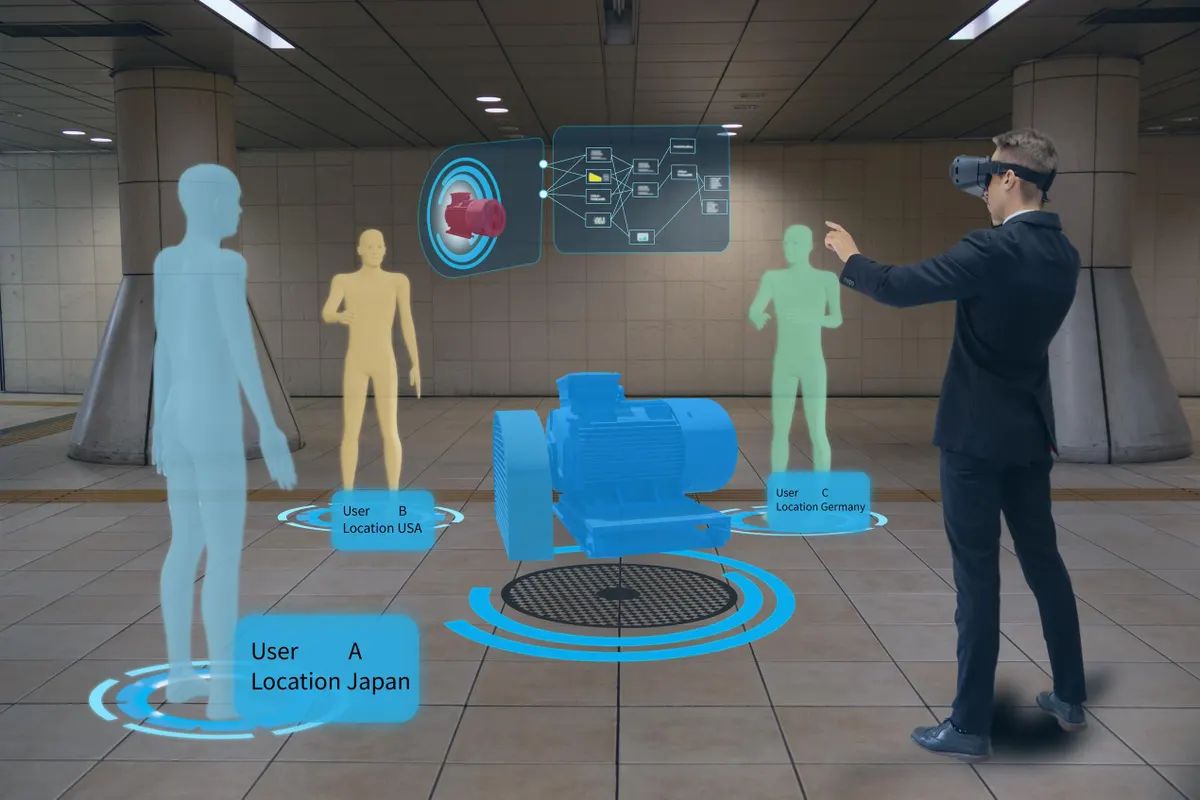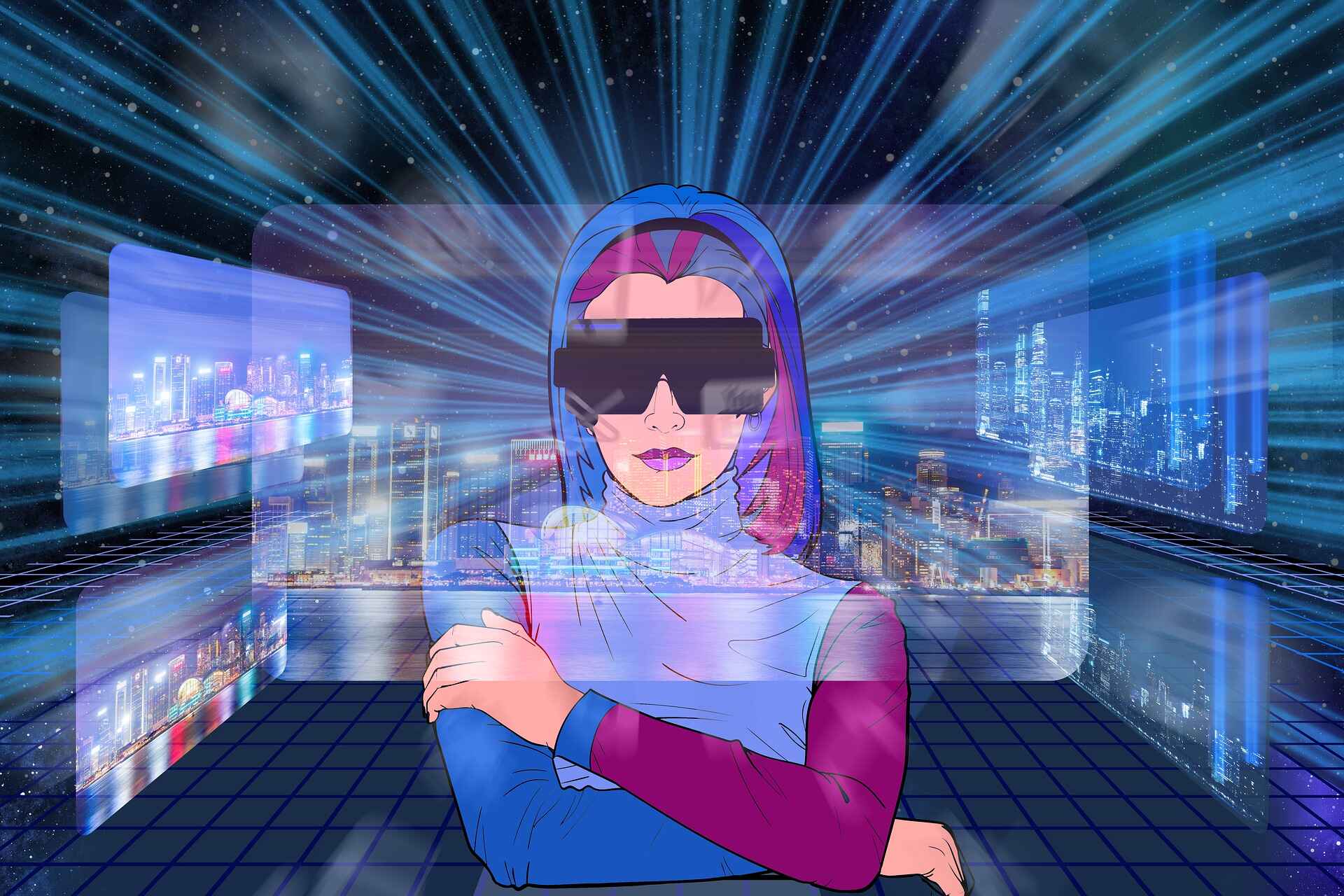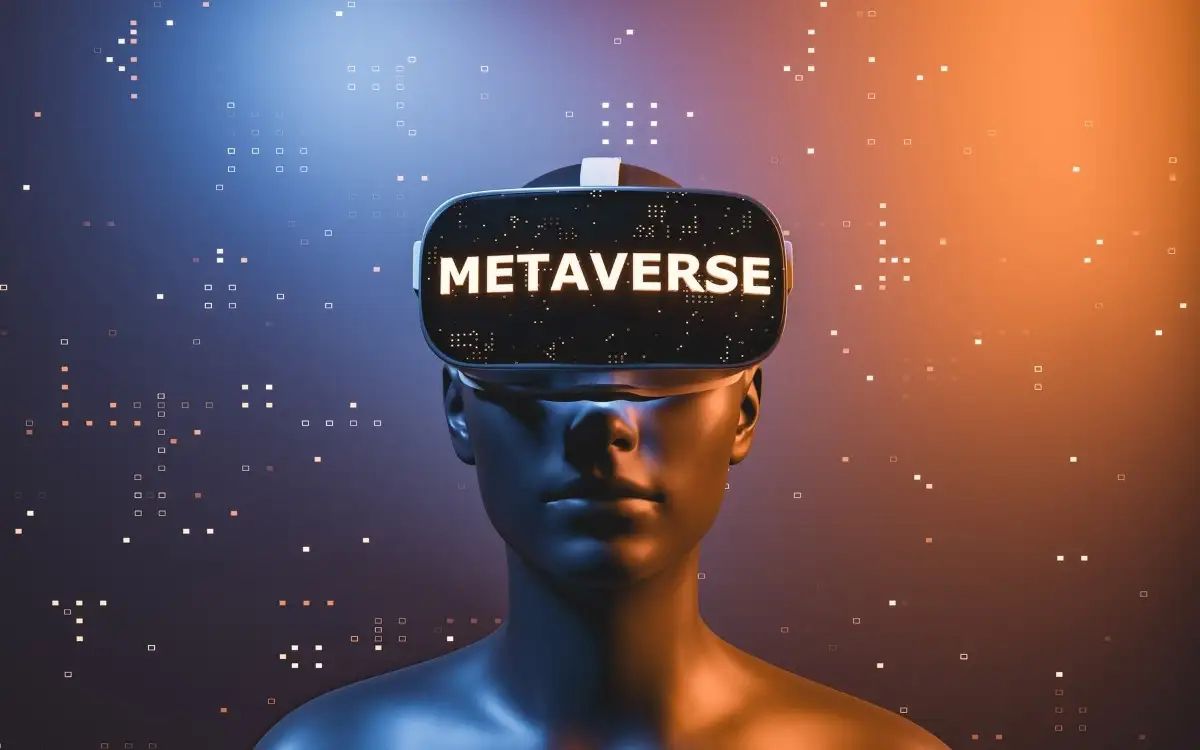Understanding the Metaverse
Understanding the Metaverse
The Metaverse is an evolving concept that refers to a virtual reality space where people can interact with digital environments and other users in real-time. It is a collective virtual shared space that encompasses various virtual worlds, augmented reality, and the internet. The concept takes inspiration from science fiction novels and movies and has gained significant popularity in recent years with the advancements in virtual reality technology.
In the Metaverse, users can engage in a wide range of activities, such as exploring digital landscapes, socializing with others, attending virtual events, conducting business transactions, and even creating their own virtual spaces. It offers a unique and immersive experience that allows individuals to escape the confines of the physical world and tap into a virtual realm limited only by their imagination and the capabilities of the technology.
The Metaverse is not a singular entity; instead, it comprises interconnected virtual environments and platforms that users can access through various devices, such as virtual reality headsets, augmented reality glasses, smartphones, and computers. These environments can include virtual reality worlds, digital marketplaces, social platforms, and gaming experiences, among others.
One key aspect of the Metaverse is the concept of digital avatars. These are virtual representations of users that they can customize to reflect their identity and appearance in the virtual space. Avatars allow users to have a presence and interact with others in a visual and interactive manner. Users can navigate the virtual world as their avatars, engaging in conversations, participating in activities, and expressing themselves in ways that may not be possible in the physical world.
The Metaverse holds tremendous potential in various fields, such as entertainment, education, business, and social interactions. It provides opportunities for immersive learning experiences, virtual shopping, remote work collaboration, and connecting with people from all over the world. As the technology continues to advance, the boundaries of the Metaverse will expand, offering new possibilities and transforming the way we live, work, and interact.
Overall, the Metaverse represents a convergence of virtual reality, augmented reality, and digital connectivity, creating a vast interconnected virtual world that goes beyond traditional online experiences. It opens up a realm of infinite possibilities for individuals and businesses, revolutionizing how we engage with digital technology. As the Metaverse continues to evolve, it is essential to understand its potential and embrace it as an integral part of our digital future.
Exploring Virtual Reality Technologies
Exploring Virtual Reality Technologies
Virtual reality (VR) technologies play a crucial role in enabling the immersive experiences offered by the Metaverse. These technologies transport users to virtual worlds by creating a simulated environment that they can interact with using specialized devices.
There are several types of VR devices available in the market, each offering a unique experience and level of immersion. One popular option is the VR headset, a wearable device that covers the user’s eyes and ears, blocking out the real world and replacing it with a virtual one. These headsets are equipped with high-resolution displays, motion sensors, and audio systems that create a seamless and immersive experience for the users.
Another type of VR technology is the augmented reality (AR) glasses, which overlay digital information onto the real world. AR glasses allow users to see and interact with virtual objects while still being aware of their physical surroundings. This technology is particularly useful for applications that blend virtual and real-world elements, such as location-based games or navigation aids.
Mobile VR devices, such as smartphones or tablets with VR capabilities, are also popular options for accessing virtual reality experiences. These devices utilize the built-in sensors and displays to create a VR experience, often by pairing them with a simple headset or goggles. While mobile VR may not offer the same level of immersion as dedicated VR headsets, it provides a convenient and accessible way for users to explore virtual environments.
As technology continues to advance, so does the quality and capabilities of VR devices. High-end VR headsets offer features such as hand tracking, positional tracking, and haptic feedback, further enhancing the sense of presence and interactivity in the virtual world. Additionally, there are standalone VR headsets that don’t require a computer or smartphone to operate, providing a hassle-free and untethered experience.
When exploring virtual reality technologies, it is important to consider factors such as the device’s compatibility with the Metaverse platforms and applications, its comfort and ergonomics, the available content library, and the overall cost. It’s also crucial to ensure that the device meets the necessary technical specifications to fully utilize the capabilities of the Metaverse.
By embracing and understanding the various virtual reality technologies, users can immerse themselves in the Metaverse and unlock new experiences and opportunities. Whether it’s exploring virtual worlds, attending virtual events, or collaborating with others in a virtual workspace, VR technologies serve as the gateway to the limitless possibilities of the Metaverse.
Choosing the Right VR Device
Choosing the Right VR Device
When it comes to immersing yourself in the Metaverse, choosing the right virtual reality (VR) device is essential. With the ever-growing range of options available in the market, it’s important to consider several factors to ensure you select a device that suits your needs and provides an optimal virtual reality experience.
Firstly, consider the level of immersion you desire. Dedicated VR headsets offer a high level of immersion, often with advanced features like positional tracking and hand tracking. These headsets, such as the Oculus Rift or HTC Vive, require a powerful PC and provide a more intense and immersive experience. On the other hand, if you’re looking for a more casual and portable experience, mobile VR devices like the Samsung Gear VR or Google Daydream may be more suitable. These devices utilize smartphones for VR experiences and offer a lower level of immersion but are more accessible and convenient.
Next, consider the comfort and ergonomics of the VR device. Since VR experiences can be quite immersive and lengthy, it’s crucial to choose a device that is comfortable to wear for extended periods. Look for devices with adjustable straps, padded headsets, and well-designed ergonomics that distribute the weight evenly. Additionally, consider the size and weight of the device, as a heavy headset can cause discomfort and strain on the neck.
Another important consideration is the device’s compatibility with the platforms and applications you wish to access in the Metaverse. Different VR devices may have varying levels of compatibility with specific platforms and applications. Ensure that the device you choose supports the Metaverse platforms you intend to engage with and has a wide range of compatible applications to maximize your virtual reality experience.
Cost is also a significant factor to consider. VR devices can vary greatly in price, from budget-friendly options to high-end, premium devices. Determine your budget and research the available options within that range. Keep in mind that additional costs may be involved, such as purchasing content or accessories for the device. Consider the overall value for money by assessing the device’s features, quality, and long-term potential.
Lastly, seek out reviews and recommendations from other users and experts in the field. User reviews can provide valuable insights into the pros and cons of different VR devices, helping you make an informed decision. Pay attention to factors like build quality, comfort, image quality, tracking accuracy, and software support when evaluating devices.
By carefully considering factors such as immersion level, comfort, compatibility, cost, and user reviews, you can confidently choose the VR device that best suits your needs and preferences. Selecting the right VR device will enhance your experience in the Metaverse, allowing you to fully immerse yourself in the virtual reality world and engage with all the exciting possibilities it has to offer.
Creating a Digital Avatar
Creating a Digital Avatar
In the Metaverse, your digital avatar is your representation and connection to the virtual world. It allows you to express your identity, interact with others, and navigate the virtual environments. Creating a digital avatar that reflects your personality and preferences is an exciting and important step in fully immersing yourself in the Metaverse.
When creating your digital avatar, consider the level of customization available. Look for platforms or applications that offer a wide range of options to personalize your avatar’s appearance, including facial features, body shape, clothing, accessories, and even animations. The more customization options available, the more you can tailor your avatar to be a true reflection of yourself or explore different personas in the virtual world.
Take advantage of the available tools and features to make your avatar unique. Experiment with various hairstyles, eye colors, and clothing styles to find a look that resonates with you. Some platforms even offer advanced customization options, such as the ability to modify body proportions or create completely fantastical avatars that defy the limitations of the physical world.
Consider how your avatar’s appearance will aid in your virtual interactions. While it’s essential to create an avatar that represents your authentic self, it’s also worth considering how your avatar’s appearance may influence your interactions with others. For instance, a professional-looking avatar may be more suitable for virtual workplace environments, while a whimsical and creative avatar can be more conducive to socializing and gaming experiences. Balance your personal preferences with the context in which you’ll be using your avatar.
Furthermore, think about the accessibility and inclusivity of your avatar. Aim to create an avatar that is welcoming and inclusive to a diverse range of individuals. Consider options for representing various genders, ethnicities, abilities, and body types. Embrace the opportunity to promote diversity and actively contribute to an inclusive virtual community by creating an avatar that represents and respects different identities.
Keep in mind that your digital avatar can evolve over time. As you spend more time in the Metaverse and explore different experiences, you may find ways to modify or enhance your avatar. Some platforms even allow for ongoing customization and updates to reflect your changing preferences and self-expression. Embrace the flexibility and adaptability of your avatar, allowing it to grow and develop alongside your virtual journey.
Creating a digital avatar is an exciting and personal endeavor. It allows you to customize your virtual appearance and express yourself in the immersive world of the Metaverse. Take advantage of the available customization options, consider the context and purpose of your avatar, and embrace the opportunities for diversity and inclusion. By creating a digital avatar that truly represents you, you’ll enhance your presence and engagement in the Metaverse, connecting with others in meaningful and authentic ways.
Connecting to the Metaverse
Connecting to the Metaverse
Connecting to the Metaverse is a crucial step in accessing and exploring the virtual reality realm. It involves establishing a connection to the platforms and environments that make up the Metaverse, allowing you to engage with its vast array of experiences, interactions, and opportunities.
One of the key ways to connect to the Metaverse is through the use of compatible devices. Virtual reality headsets, augmented reality glasses, smartphones, and computers serve as gateways to accessing the virtual environments. Ensure that your chosen device is compatible with the Metaverse platforms and applications you wish to engage with, as different devices can have varying levels of compatibility and performance.
Another essential aspect of connecting to the Metaverse is having a stable and reliable internet connection. Since the Metaverse relies heavily on real-time interactions and data streaming, a fast and consistent internet connection is crucial. Ensure that you have a broadband connection that can handle the bandwidth requirements of virtual reality experiences, especially when engaging in multiplayer or online activities.
Once you have the necessary devices and internet connection, you can connect to the Metaverse through specific applications and platforms. These platforms serve as portals into the virtual world, offering a variety of experiences such as social networking, gaming, virtual marketplaces, and even virtual work environments. Some popular Metaverse platforms include Second Life, VRChat, Decentraland, and AltSpace VR, among others. Explore different platforms to find the ones that align with your interests and objectives within the Metaverse.
In addition to dedicated Metaverse platforms, many existing social media platforms and online communities are also embracing virtual reality and incorporating Metaverse elements. Major platforms like Facebook, Instagram, and Snapchat have launched features that allow for sharing and interacting with VR content. This integration provides users with opportunities to connect with the Metaverse through platforms they are already familiar with, further bridging the gap between the physical and virtual worlds.
When connecting to the Metaverse, consider privacy and security. Be mindful of the personal information you share and ensure that you understand the privacy policies and settings of the platforms you use. It’s important to protect your identity and data while enjoying the immersive experiences the Metaverse offers.
Lastly, embrace the social aspect of the Metaverse by connecting with others. Engage in conversations, join virtual communities, and collaborate with like-minded individuals. The Metaverse offers a unique opportunity to connect and interact with people from around the world, fostering new relationships and forming communities centered around shared interests.
Connecting to the Metaverse opens up a world of possibilities and experiences. By having the right devices, a dependable internet connection, and engaging with platforms that suit your interests, you’ll be able to immerse yourself in the virtual reality realm, interact with others, and discover the limitless potential of the Metaverse.
Navigating the Virtual World
Navigating the Virtual World
As you enter the virtual realm of the Metaverse, it’s important to understand how to navigate and explore the virtual world effectively. Navigating the virtual world involves understanding the controls and movement mechanisms, familiarizing yourself with the virtual environments, and using spatial awareness to interact with the virtual space and other users.
One of the primary ways to navigate the virtual world is through the use of hand controllers or other input devices. These controllers allow you to interact with objects and environments within the virtual space. Familiarize yourself with the controls for movements such as walking, running, jumping, or flying, depending on the capabilities of the specific platform or application you are using.
Some virtual reality experiences also utilize teleportation or point-and-click mechanisms for movement. These mechanisms allow you to instantly teleport to different locations within the virtual world or quickly navigate through menus and options. Understanding and utilizing such navigation techniques can greatly enhance your efficiency and comfort within the virtual space.
Take time to explore and familiarize yourself with the virtual environments you encounter in the Metaverse. Observe the landscapes, objects, and landmarks as they contribute to the overall immersive experience. Some virtual worlds may have distinct regions or areas with different themes and objectives, so having a good spatial awareness can help you navigate and explore effectively.
Interacting with other users in the virtual world is another important aspect of navigation. Engage in conversations, collaborate on projects, and participate in group activities. Utilize voice chat or text chat features within the virtual platforms to communicate effectively with others. Being socially aware and respecting others’ boundaries and personal space is crucial for a positive and inclusive virtual experience.
Utilize the functionality provided by the virtual environment to enhance your navigation and experience. Virtual worlds often offer options for customization, such as the ability to rearrange objects or create personal spaces within the virtual environment. Take advantage of these features to create a personalized and comfortable environment that aligns with your preferences and needs.
It’s also essential to maintain a balance between exploring the virtual world and taking breaks to rest and recharge. Extended periods of virtual reality engagement can be physically and mentally taxing. Remember to prioritize your well-being and take regular breaks to prevent eye strain, fatigue, and disorientation. Give yourself time to transition between the virtual and physical world to ensure a smooth experience.
By familiarizing yourself with the navigation controls and mechanisms, getting to know the virtual environments, interacting with others, utilizing the available customization options, and maintaining a balance between virtual and real life, you’ll be able to navigate the virtual world of the Metaverse with confidence and maximize your enjoyment of the immersive experiences it has to offer.
Engaging in Virtual Social Interactions
Engaging in Virtual Social Interactions
One of the most exciting aspects of the Metaverse is the opportunity to engage in virtual social interactions. The virtual world allows you to connect and communicate with people from all over the globe, fostering new friendships, collaborations, and social experiences that transcend physical boundaries. However, effectively engaging in virtual social interactions requires understanding the dynamics of virtual communities and utilizing the available features and platforms.
Virtual platforms often provide various communication channels for social interactions. Take advantage of features such as voice chat, text chat, and video chat to communicate and connect with other users. Engage in conversations, participate in group activities, and join virtual communities centered around shared interests. Listening actively, expressing empathy, and maintaining respectful dialogue are key to building meaningful connections within the virtual community.
Embrace the diversity and inclusivity of the virtual world. The Metaverse brings together people from different backgrounds, cultures, and experiences. By embracing diversity, you foster a welcoming and inclusive environment where individuals can express themselves freely and feel valued. Engage in conversations that promote understanding, celebrate differences, and foster a sense of belonging for everyone in the virtual community.
Participating in events and activities within the virtual world is an excellent way to engage with others and expand your social circle. From virtual parties and concerts to collaborative projects and skill-sharing sessions, virtual platforms offer a plethora of opportunities to connect with like-minded individuals and pursue shared interests. Take the initiative to join events and actively participate, fostering connections and creating memorable experiences.
Remember to be mindful of your online presence and digital reputation. Just like in the physical world, your behavior and actions in the virtual world can impact how others perceive you. Maintain a positive and respectful attitude, adhere to community guidelines, and treat others with kindness and empathy. Building a positive online presence helps establish credibility, trust, and lasting relationships within the virtual community.
Virtual social interactions can provide immense social and emotional support, especially in times when physical interactions may be limited. Engage in virtual support groups or seek out communities that focus on well-being and personal growth. Share experiences, provide encouragement, and receive support from like-minded individuals who understand and empathize with your journey.
Lastly, striking a balance between virtual and real-life interactions is crucial. While virtual social interactions can be enriching and enjoyable, it’s important to maintain a healthy balance and not neglect your offline relationships and responsibilities. Set boundaries, allocate time for both virtual and physical interactions, and prioritize self-care to ensure a healthy and fulfilling overall social experience.
Engaging in virtual social interactions within the Metaverse opens up a world of connections, experiences, and opportunities. By utilizing the communication channels, embracing diversity and inclusivity, participating in events, fostering a positive online presence, seeking support when needed, and balancing the virtual and physical worlds, you can create meaningful relationships and build a vibrant and supportive virtual community that enhances your virtual reality journey.
Using Metaverse Platforms for Work
Using Metaverse Platforms for Work
The Metaverse is not just a realm for entertainment and social interactions; it also holds immense potential for enhancing and transforming the way we work. Metaverse platforms offer unique opportunities for collaboration, productivity, creativity, and remote work. By leveraging the capabilities of the virtual world, individuals and businesses can tap into a new frontier of work possibilities.
One of the key benefits of using Metaverse platforms for work is the ability to collaborate with colleagues and clients from any location. Virtual reality allows for real-time interactions, shared virtual workspaces, and seamless communication, enabling remote teams to collaborate as if they were physically present in the same room. This eliminates geographical barriers and offers flexibility in work arrangements, resulting in increased efficiency, reduced travel time and costs, and improved work-life balance.
Metaverse platforms can also provide immersive and interactive environments for meetings, presentations, and training sessions. Whether it’s a virtual boardroom, a virtual trade show, or a virtual classroom, these platforms offer engaging and dynamic settings that enhance communication and learning. Users can share documents, presentations, and multimedia content, fostering greater interactivity and participation.
The virtual world allows for creativity and innovation in work processes. It offers the freedom to design virtual spaces and customize the environment to suit specific business needs. Companies can create virtual offices, interactive showcases for products, or even virtual showrooms for customers to explore. This opens up opportunities for unique branding and marketing experiences, where users can interact with products, test prototypes, and provide feedback in a virtual environment.
Metaverse platforms also provide new avenues for virtual events and conferences. Companies can host virtual trade shows, conferences, and seminars, reaching an unlimited number of attendees from around the world. Virtual events offer cost savings, environmental benefits, and the ability to create immersive experiences that go beyond traditional physical events. Users can engage with virtual exhibitor booths, attend live presentations, network with other participants, and access event content on-demand.
Virtual reality in the workplace can also enhance training and simulation experiences. Instead of relying solely on textbook or video-based training, employees can engage in immersive simulations that replicate real-life scenarios. This hands-on learning approach allows for practical skill development in a safe and controlled environment. Training sessions can be customized, interactive, and more engaging, leading to improved retention and application of knowledge.
As with any work environment, it’s crucial to ensure the security and protection of sensitive data when using Metaverse platforms for work. Companies should adhere to best practices for data privacy, encryption, authentication, and access control to safeguard corporate information and maintain the trust of clients and employees.
By harnessing the potential of Metaverse platforms for work, individuals and businesses can unlock a new level of productivity, collaboration, and innovation. The virtual world offers a dynamic and immersive work environment that transcends physical limitations, redefines traditional work processes, and opens up exciting possibilities for the future of work.
Collaborating in Immersive Virtual Environments
Collaborating in Immersive Virtual Environments
Immersive virtual environments offered by the Metaverse provide a unique and powerful platform for collaboration. These environments enable individuals and teams to work together, share ideas, and create in a virtual space that transcends the limitations of physical distance. Collaborating in immersive virtual environments offers a range of benefits that enhance efficiency, creativity, and teamwork.
One of the key advantages of collaborating in immersive virtual environments is the ability to overcome geographical barriers. With the power of virtual reality, teams can come together regardless of their physical locations. This opens up opportunities for global collaboration, where individuals from different parts of the world can work seamlessly in a shared virtual workspace. By eliminating travel time and costs, teams can save resources while fostering collaboration, innovation, and diverse perspectives.
Immersive virtual environments provide a rich and interactive canvas for brainstorming and idea generation. Users can access virtual whiteboards, sticky notes, and other collaborative tools to freely express and visualize their thoughts. The ability to manipulate objects and interact with the virtual environment in real-time enhances the creative process, enabling dynamic discussions and rapid iteration of ideas.
Virtual collaboration also allows for enhanced visualization and simulation capabilities. Users can create and manipulate three-dimensional models, prototypes, and simulations within the virtual environment. This provides a more immersive and realistic experience, facilitating better understanding, problem-solving, and decision-making. Teams can test and evaluate ideas in a virtual space before investing resources into physical implementation, reducing risks and optimizing outcomes.
The social aspect of virtual collaboration in immersive environments is just as important as the work itself. Virtual team members can communicate using voice chat, text chat, or gestures, replicating the nuances of face-to-face interactions. This fosters a sense of presence and closeness, building rapport and trust among team members. Additionally, teams can engage in recreational activities or social gatherings within the virtual environment, promoting relationship building and team cohesion.
Virtual collaboration can benefit a wide range of industries and professions. From architects designing buildings to engineers collaborating on complex projects, immersive virtual environments provide a platform for seamless collaboration, rapid iteration, and real-time feedback. Educational institutions can leverage virtual collaboration to create interactive learning experiences, allowing students to work together on projects and experiments in a virtual space.
While virtual collaboration offers many advantages, it’s essential to ensure effective communication and coordination. Establish clear communication channels, allocate roles and responsibilities, and establish guidelines for participation and decision-making within the virtual environment. Facilitators or project managers can help oversee the collaborative process, ensuring that everyone stays engaged and on track towards achieving the desired outcomes.
In summary, collaborating in immersive virtual environments brings together the power of technology and human ingenuity. Virtual reality transcends physical limitations, enabling teams to collaborate seamlessly and creatively regardless of their geographical locations. By leveraging the interactive and immersive features of the virtual space, teams can enhance communication, visualization, and problem-solving capabilities. The potential for global collaboration, innovative idea generation, and experiential learning makes immersive virtual environments a valuable tool for fostering teamwork and innovation in the digital age.
Unlocking Opportunities in the Metaverse
Unlocking Opportunities in the Metaverse
The Metaverse presents a vast array of opportunities for individuals and businesses alike. As technology continues to advance and virtual reality becomes more prevalent, unlocking these opportunities can lead to groundbreaking advancements, new business models, and transformative experiences. Embracing the potential of the Metaverse can open doors to various exciting possibilities.
One significant opportunity in the Metaverse is in the realm of entrepreneurship. The virtual world allows individuals to create and sell virtual products, services, and experiences. Virtual marketplaces enable entrepreneurs to showcase and distribute virtual goods, artwork, and digital content, reaching a global audience without the constraints of physical supply chains. The Metaverse also provides avenues for virtual events, entertainment experiences, and virtual tourism, allowing entrepreneurs to monetize their creativity in innovative ways.
The Metaverse also holds potential for immersive education and training. Virtual reality can transport learners to realistic and engaging environments, enabling hands-on learning experiences that were previously restricted by physical limitations. From medical simulations to architectural design, the Metaverse can provide a platform for interactive and experiential learning that enhances understanding and retention of knowledge. Educational institutions and training organizations can harness the power of the Metaverse to deliver impactful and scalable learning experiences.
The entertainment industry is another sector that can benefit greatly from the Metaverse. Virtual reality gaming, immersive storytelling, and virtual concerts offer new and captivating experiences for entertainment enthusiasts. As virtual reality technology improves, the lines between video games, movies, and other forms of entertainment blur, allowing for entirely new forms of media and interactive experiences. Artists, game developers, and storytellers have the opportunity to push boundaries and create unique and immersive experiences that captivate audiences in ways previously unimaginable.
Remote work and collaboration are also areas where the Metaverse provides opportunities. Virtual meeting rooms, shared workspaces, and collaborative tools in the virtual world eliminate the need for physical office spaces and allow teams to work together seamlessly from different locations. Remote workers can benefit from the sense of presence and engagement offered by the Metaverse, fostering productivity and maintaining a strong sense of team cohesion, regardless of geographical distances.
Furthermore, the Metaverse has the potential to revolutionize social interactions and connectivity. It offers a platform for individuals to connect with like-minded people, form online communities, and engage in shared activities and events. The ability to meet, socialize, and collaborate with people from around the world in immersive virtual environments creates new opportunities for networking, friendship, and community-building. The Metaverse has the power to transcend physical barriers and bridge gaps, fostering global connections in ways that were not previously possible.
As with any technological advancement, it is crucial to address and mitigate potential challenges and risks associated with the Metaverse. Issues such as privacy, security, accessibility, and ethical implications should be carefully considered as the Metaverse continues to develop and expand. However, by proactively addressing these concerns, we can maximize the opportunities and benefits that the Metaverse has to offer.
In summary, the Metaverse presents a wealth of opportunities for innovation, entrepreneurship, education, entertainment, remote work, and social connectivity. By embracing the potential of the Metaverse and exploring the possibilities it offers, individuals and businesses can unlock new frontiers and shape the future of virtual reality experiences. The Metaverse has the power to transform industries, revolutionize the way we live and work, and create new avenues for human connection and imagination.
Balancing Real Life and Metaverse Engagement
Balancing Real Life and Metaverse Engagement
Engaging with the Metaverse and immersing oneself in virtual reality experiences can be exciting and captivating. However, it is crucial to maintain a healthy balance between the virtual world and real-life commitments and responsibilities. Striking this balance is essential to ensure overall well-being, productivity, and meaningful engagement in both realms.
One way to balance real life and Metaverse engagement is by setting clear boundaries and time limits. Establish specific times during the day or week dedicated to virtual reality experiences, allowing for focused engagement without encroaching on other aspects of life. By setting aside designated time for the Metaverse, individuals can maintain a sense of control and prevent the virtual world from taking precedence over real-life obligations.
It is also important to prioritize and manage real-life commitments effectively. Identify and prioritize tasks, responsibilities, and relationships in your personal and professional life. Ensure that essential activities such as work, family commitments, and self-care are not compromised or neglected due to excessive Metaverse engagement. By managing your time and responsibilities efficiently, you can enjoy the virtual world without sacrificing the real-life experiences and connections that are equally important.
Additionally, remain mindful of the impact of excessive Metaverse engagement on physical and mental well-being. Prolonged virtual reality experiences can lead to fatigue, eye strain, and decreased physical activity. Remember to take regular breaks, stretch, and engage in physical activities outside of the virtual realm. Maintaining a healthy lifestyle, including proper sleep, exercise, and nutrition, contributes to your overall well-being and helps preserve the balance between real life and Metaverse engagement.
Examine the motivations behind your Metaverse engagement. Ensure that virtual reality experiences are adding value to your life and align with your personal and professional goals. It can be easy to get caught up in the immersive nature of the virtual world, but regularly self-reflect and evaluate the impact of your Metaverse engagement on your overall happiness, relationships, and personal growth.
Remember the importance of genuine human connections and face-to-face interactions. While the Metaverse can eliminate geographical barriers and provide opportunities for virtual socializing, real-life connections play a significant role in our overall well-being. Prioritize nurturing and maintaining relationships with family, friends, and colleagues through meaningful offline interactions, fostering a sense of community and support beyond the virtual realm.
Finally, practice self-awareness and monitor your emotions and mental state while engaging with the Metaverse. Pay attention to signs of addiction or excessive attachment to virtual reality experiences. If you find that your virtual engagement is negatively impacting your real-life functioning or causing distress, it may be time to reassess your priorities and seek a healthier balance.
By consciously balancing real-life commitments and Metaverse engagement, individuals can experience the best of both worlds. The Metaverse offers unique opportunities for connection, creativity, and exploration, but it is essential to maintain perspective and ensure that the virtual world enhances, rather than overwhelms, real-life experiences. Striking this balance allows for a fulfilling and harmonious integration of both realities.

























